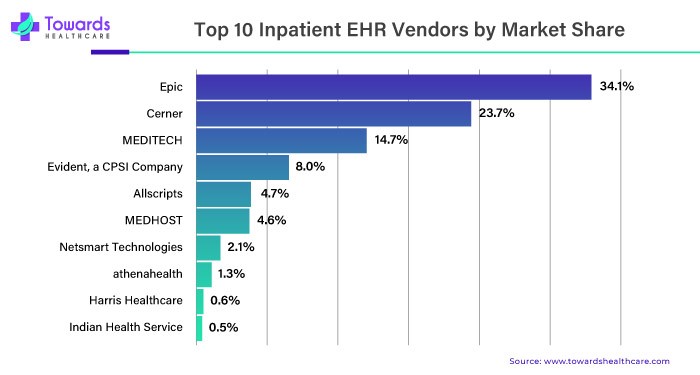The global electronic health records (EHRs) market surged to reach a size of USD 27.42 billion in 2023. Forecasts indicate that by 2033, it is expected to reach USD 41.87 billion. Reporting within healthcare systems is predicted to experience the fastest growth, with a projected compound annual growth rate (CAGR) of 5.1% by 2033.
The World Health Organization (WHO) has highlighted the profound benefits of Electronic Health Records (EHR) in their recent report. EHR systems ensure that patient information is more accurate, readily available during treatment, and contribute to understanding healthcare costs, utilization, and outcomes. They improve healthcare quality, reduce costs, support patient mobility, ensure reliable information and enable seamless information sharing among healthcare providers.
Recent Developments in EHR:
According to Healthit.gov:
- On January 23rd, 2024, the U.S. Department of Health and Human Services has been working on improving policies for patient access to health information, with initiatives highlighted in an event in October 2023.
- On January 18th, 2024, The Health Information Technology Advisory Committee (HITAC) is set to guide ONC policies, with experts recommending standards in areas like interoperability, privacy, and patient access to information.
- In 2021, EHR systems have significantly enhanced patient information accuracy and accessibility at the point of care, providing insights into healthcare costs and outcomes. In Germany, the Patient Data Protection Act mandates electronic patient records, although a survey in Norway has revealed concerns among physicians regarding system interruptions and complexity. Continuous evaluation is crucial for improving healthcare effectiveness and efficiency despite the widespread adoption of EHRs.
For Example:
In 2022, the Health Information National Trend Survey (HINTS6) introduced inquiries about people’s comfort with sharing social needs data, with approximately 60% of Americans comfortable with their healthcare providers sharing information about their social needs for treatment.

Technology Integration:
- Interoperability improvements allow seamless communication with other healthcare systems.
- Cloud computing ensures secure storage of patient data, accessible from anywhere.
- Mobile health solutions enable updates to patient records and support telehealth.
- Data analytics and Artificial Intelligence (AI) assist in understanding patterns and predicting outcomes.
- User-friendly interfaces improve accessibility and efficiency.
- Integration with wearable devices provides real-time health data.
Trends in U.S. Hospitals and Physician EHR Adoption:
Incorporating advanced analytics within EHR systems provides decision support, assists in identifying trends, and supports evidence-based decisions. Patients are empowered by accessing their health information through EHR systems, fostering a collaborative relationship with healthcare providers.
Major Clinical Applications of EHR:
The introduction of Electronic Health Records (EHR) has revolutionized the management and utilization of patient information worldwide. These digital systems replace traditional paper records, expedite information retrieval, and provide instantaneous access to patient data, facilitating quicker decision-making and timely interventions.
Furthermore, EHR systems foster seamless communication among healthcare entities, ensuring a well-coordinated approach to patient care. They offer a comprehensive view of a patient’s medical history, medications, allergies, and test results, empowering healthcare professionals to make more informed decisions and reducing errors.













